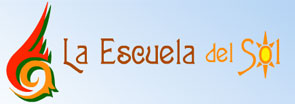- Home
- Accommodation
- Activities
- Area Info
- Maps
- Photo Galleries
- Real Estate
- Travel
National Parks
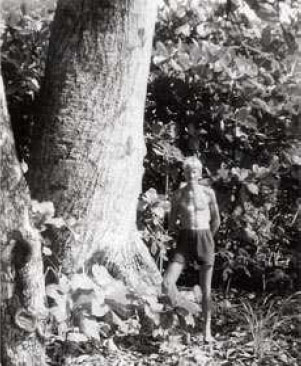
Costa Rica has one of the world’s best and most extensive national park systems. Although poaching and illegal logging can still happen, they aren’t nearly the problem that they are in other countries in Central America. Costa Rica is also the only country in Central America whose forest cover is expanding every year.
The Southern Nicoya Peninsula area, where Montezuma is located, is considered “dry tropical forest”, which is one of the rarest and least-studied types of jungle in the world. Because there’s hardly a drop of rain for five months every year during the dry season, trees and animals have needed to adapt to survive this yearly drought. Most of the trees will drop all their leaves and go into hibernation starting in January, and their leaves will begin to return again in late April, just in time for the first rains. Animals spend more time in the river valleys, which still have water running in them, or not too deep underground for the tree roots. The jungle canopy in river valleys thus can keep its leaves all year, and is made up of trees that can’t survive on the plains, and is more like that of true rainforest regions of Costa Rica.
The national park system of Costa Rica was founded in the 1960’s, started by two Montezuma residents, who are both buried in the jungle in a private reserve just north of Montezuma.
Nils Olof Wessberg and his wife Karen Morgenson raised money in Scandanavia in order to donate over 1000 hectares of land at the tip of the Southern Nicoya Peninsla that became Cabo Blanco, the first national park of Costa Rica (technically called an “Absolute Natural Reserve.” Nils, known as “Olle” was from Sweden, and Karen was from Denmark. Nils was later murdered in the Osa by ranchers who were resisting his work of trying to protect the area, which backfired, creating an international incident and leading to Costa Rica’s president giving a speech in which he praised Wessberg’s work and committed Costa Rica to protecting its rainforests by creating a more extensive national park system. Costa Rica’s government then created Corcovado National Park in the Osa peninsula, dedicated to Wessberg, and has become one of Costa Rica’s greatest attractions. The Danish movie “A Taste of Paradise” (Et hjörne av paradis) was created in 1999 based loosely on their life here.
More information about specific national parks and reserves here:
- Curu National Wildlife RefugeCurú National Wildlife Refuge, known in Costa Rica as “Refugio Nacional de Vida Silvestre Curú” is the best park in the southern Nicoya peninsula. It offers scuba diving, a beautiful white sand beach, tons of wild animals including two reintroduction programs, cabinas for rent, mangrove swamps, hiking trails, and much more. You can even ...
- Caletas-Arío National Wildlife Refuge
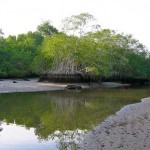 Inscribed relatively recently (in 2006), the Caletas Ario wildlife Refuge (CANWR) has 313 hectares (773 acres) of protected land, plus protected marine reserves that extend 12 miles out to see, encompassing 19,846 Hectares! Within this zone, highly destructive fishing practices are prohibited. It includes 7km of beaches as well, including the impressive Rio Bongo river ...
Inscribed relatively recently (in 2006), the Caletas Ario wildlife Refuge (CANWR) has 313 hectares (773 acres) of protected land, plus protected marine reserves that extend 12 miles out to see, encompassing 19,846 Hectares! Within this zone, highly destructive fishing practices are prohibited. It includes 7km of beaches as well, including the impressive Rio Bongo river ... - Romelia Wildlife Refuge
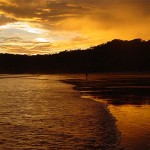 Known in spanish as “Refugio Mixto de Vida Silvestre Romelia” (RMVSR), this reserve is located just behind Playa Grande in Montezuma. Although this inscribed as a national wildlife refuge, it’s still managed by the original family who founded it, so it’s not public property and should be respected as such. So unless you’re ...
Known in spanish as “Refugio Mixto de Vida Silvestre Romelia” (RMVSR), this reserve is located just behind Playa Grande in Montezuma. Although this inscribed as a national wildlife refuge, it’s still managed by the original family who founded it, so it’s not public property and should be respected as such. So unless you’re ... - Nicolas Wessberg Natural Reserve
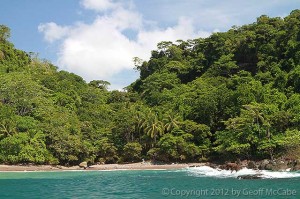 Nicolas Wessberg Natural Reserve is park of the Costa Rican National Park System. It’s a gorgeous piece of beachfront land, just north of Montezuma. You can easily reach it by walking 15-20 minutes, just past Ylang Ylang Resort. Named for Olof “Nicolas” Wessberg, the Swedish man who lived in Montezuma decades ago and became the founder ...
Nicolas Wessberg Natural Reserve is park of the Costa Rican National Park System. It’s a gorgeous piece of beachfront land, just north of Montezuma. You can easily reach it by walking 15-20 minutes, just past Ylang Ylang Resort. Named for Olof “Nicolas” Wessberg, the Swedish man who lived in Montezuma decades ago and became the founder ... - Curú National Wildlife Refuge
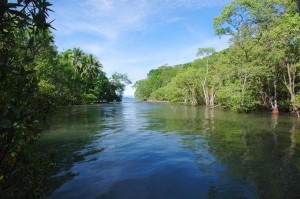 Curú National Wildlife Refuge, known in Costa Rica as “Refugio Nacional de Vida Silvestre Curú” is the best park in the southern Nicoya peninsula. It offers scuba diving, a beautiful white sand beach, tons of wild animals including two reintroduction programs, cabinas for rent, mangrove swamps, hiking trails, and much more. Unfortunately, most tourists zip ...
Curú National Wildlife Refuge, known in Costa Rica as “Refugio Nacional de Vida Silvestre Curú” is the best park in the southern Nicoya peninsula. It offers scuba diving, a beautiful white sand beach, tons of wild animals including two reintroduction programs, cabinas for rent, mangrove swamps, hiking trails, and much more. Unfortunately, most tourists zip ... - Cuevas Murcielagos Wildlife Refuge
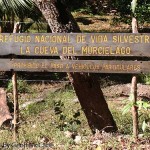 The title above is a mix of Spanish and English, which I used to help travelers understand what it’s called and what it is. The translation in English would be “Bat Cave Wildlife Refuge” or in Spanish, the full name is “Refugio de Vida Silvestre Cueva Murcielago, Costa Rica” This area is not known well ...
The title above is a mix of Spanish and English, which I used to help travelers understand what it’s called and what it is. The translation in English would be “Bat Cave Wildlife Refuge” or in Spanish, the full name is “Refugio de Vida Silvestre Cueva Murcielago, Costa Rica” This area is not known well ... - Cabo Blanco National Reserve and Park
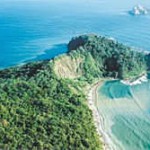 Cabo Blanco is a popular tourist destination for tourists who visit Montezuma and Santa Teresa. They are naturally drawn to the largest national park in the area. On the Cabo Blanco map below you can see two ranger stations. Currently, you can only access the park from the Cabuya/Montezuma side. The Mal Pais ...
Cabo Blanco is a popular tourist destination for tourists who visit Montezuma and Santa Teresa. They are naturally drawn to the largest national park in the area. On the Cabo Blanco map below you can see two ranger stations. Currently, you can only access the park from the Cabuya/Montezuma side. The Mal Pais ...

